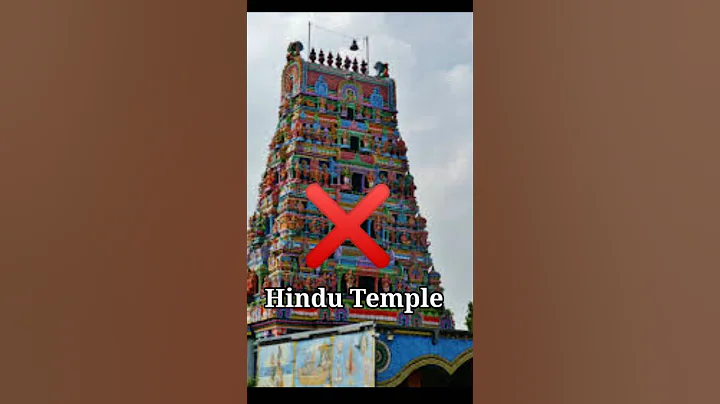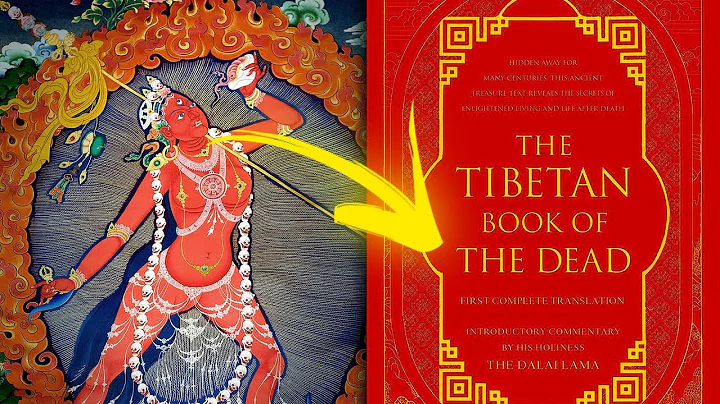Our Prince Gautama Siddhartha finally attained enlightenment and became a Buddha after several years of hard training. He became a saint of the Sakyamuni clan and was respectfully called Sakyamuni. Later generations will honor him as Buddha.
After attaining enlightenment under the Bibala tree (renamed the Bodhi tree after the Buddha attained enlightenment), Sakyamuni accepted people's diligent persuasion and also wanted to make his thoughts and doctrines understandable and acceptable to the world. Determined to promote Buddhism and preach to the world. In the next nearly 50 years of missionary activities, he traveled mainly in Central India.
In India, the Magadha King's Saber City on the south bank of the Ganges River and the Chosaro Kingdom's Savatthi City on the north bank are the two major cities where Sakyamuni preached Buddhism, and they were also the places where early Buddhists developed. As the number of believers increased, it gradually expanded to places such as Vaishali and Paranai outside the two major cities. In these places, the familiar Bamboo Forest Abode , Deer Mother Lecture Hall, Lingjiu Dojo, Gion Abode , Anluo Shuyuan, and the famous Luye Garden Abode were built.
The first stop of his preaching was Deer Park.

Buddhist holy land Sarnath
Sarnath is located about 10 kilometers north of Varanasi, Uttar Pradesh, India. It is one of the four holy places of Buddhism in ancient India. This is the place where the Buddha Sakyamuni first taught the Dharma and accepted disciples after he became a Buddha. It is known as the "first turning of the wheel of Dharma" in history, and the Buddhist Sangha was also established here.
In Volume 14 of the Book of Obsidian, this place is the place where gods and immortals and scholars who have attained the Tao and Five Powers travel. It is not the residence of ordinary people, so it is called the residence of immortals. It is also said that in the past, King Parana visited this place on a hunting trip and netted thousands of deer. After the Deer King begged him to send one deer a day for the king to eat, the king began to release a group of deer, hence the name of the place: "Deer Park". Volume 183 of the Mahavipasha Treatise is based on the popular saying: The Buddha was regarded as the "most excellent immortal" in his past life, and he first turned the wheel of Dharma here, so it was called the "immortal treatise"; because before the Buddha was born or when he was born, there were always gods and immortals. It has been living here forever, so it is called "the abode of immortals"; in the past, five hundred immortals flew in the air and came here to see the king's maidservant. They lost their supernatural powers due to lust and fell here, so it was called "the place where immortals fell". In addition, in Volume 7 of the Records of the Western Regions of the Tang Dynasty, the Deer King sacrificed his life for a pregnant doe, which moved King Vandado to release the deer and donate the forest, which was called the "Deer Giving Forest".
Sarnath has been admired and worshiped since Asoka . At the beginning of the eighth century, when Xuan Zang traveled to the west, there were many pavilions in this area, surrounded by continuous walls. There was a 200-foot-high monastery in the wall, and in the southwest there was a stone pillar built by King Asoka that was more than 70 feet high. The stone was rich in jade. , the mirror shines brightly, there are more than a thousand monks, it is its most prosperous era.
At present, Murgantha Hakuti Temple is located at the main entrance of Sarnath. It was built in 1931 and its style imitates the Mahabodhi Temple in Bodhgaya. It is surrounded by flowerbeds, meadows, woods and a deer park, where a golden statue of Buddha is enshrined. There is a huge Bodhi tree in the northeast of the temple. This tree was cut and transplanted from the tree where Buddha Sakyamuni attained enlightenment. It was under this tree that Sakyamuni gave his first sermon to his five disciples. To the southwest of the main temple, there is a tall building like a large barrel - Damangk Pagoda. The tower is 33 meters high and is the symbol of Sarnath.

Sarnath Damankota
In Sarnath, Buddha Sakyamuni recruited the first batch of believers and began to preach the Four Noble Truths Holy Dharma of suffering, collection, cessation and path. The first Venerable Arokochenru , Venerable Ashuoshi, Venerable Bhati, Venerable Shili Kassapa and Venerable Mahanangulli who first followed Sakyamuni in penance achieved enlightenment one after another. Under his guidance, he became a monk and became a monk. This is the beginning of Buddha Sakyamuni's teaching, which is called in Buddhist words: "The First Turn of Dharma Theory."
wheel is a weapon used in ancient Indian wars. There is a legend in ancient India that the great king who conquered all directions was called the Chakravartin King. The turning intention is preaching, and the wheel intention is the Buddha's Dharma. Then the meaning of turning the wheel of Dharma can be interpreted as that after the Buddha's Dharma theory is preached, all incorrect Dharma and unwholesome Dharma will be broken. Therefore, Buddha Sakyamuni's teaching is called turning the wheel of Dharma.
During the more than three months after Sakyamuni first preached the Dharma in Sarnath, Yashe (also known as Baoshi) from the city of Polonais came to convert and become a monk, and brought many of his friends, about There were more than fifty people. He himself went alone to the city of Shecheng, the king of Magadha, by the Niranjan River to teach the Dharma. During this period, he taught the three Brahman brothers Urubinkasyapa, Natikasyapa and Gayakasyapa. The three of them led more than a thousand of their disciples to convert, and "overwhelmed" the disciples of Sanjaya Vihara, who belonged to the sixth heretic master, and the scholars Shariputra and Moggallana , who were also famous for their intelligence. He led his disciples to convert to Buddhism.
Later, another person who was very familiar to everyone also came to Sakyamuni. He was the founder of Zen Mahakasyapa .

Venerable Mahakassapa

Venerable Mahakassapa
At this point, the first stop of Buddha Sakyamuni’s preaching came to a successful end.
The second stop of his preaching was the city of Rajagaha located in the Kingdom of Magadha.
In the past, when Sakyamuni first abandoned the prince and went to the mountains to practice Buddhism, he went to the Kingdom of Magadha. King Bimbasara was willing to give half of the land to Prince Sakyamuni in exchange for him not to become a monk, but he was dismissed by Sakyamuni. Kamuni declined. So the king asked Sakyamuni to come to the city of Sakyamuni, King of Magadha, to save him after he became enlightened.
Therefore, in order to fulfill his promise, Buddha Sakyamuni came to Rajagaha with a group of disciples. The city of Rajagaha in the Kingdom of Magadha is large in scale, prosperous and magnificent. It is said that there are 32 gates and 64 small gates.
Here, King Bimbasara built a "bamboo forest monastery" for Buddha Sakyamuni in a garden full of bamboo forests on the outskirts of the back of the royal residence, called Galanda Bamboo Garden.

This is the Bamboo Grove Jingshe built with later donations from the Japanese.
It has 16 courtyards, each with 60 rooms, 500 pavilions and 72 lecture halls. It is the first monastery in the history of Buddhism. Buddha Sakyamuni spent six summers here. This was also the beginning of the establishment of Buddhist temples in India.
Rajgir Bamboo Grove is located in Patna area in Bihar . Rajagaha was the capital of the ancient Indian Kingdom of Magadha. The world-famous Bamboo Grove Abode was the place where Buddha Sakyamuni practiced practice. It is surrounded by a solid basin surrounded by rock mountains. The city wall is like China's Great Wall . The outer wall is about 5 meters thick and the total length is 40 kilometers. It is the oldest existing stone city wall in India. There are mountains around the old city, which are called "Spirit Mountains" in Buddhist scriptures.
The third stop of his preaching was the Acropolis of Chosaro.
Savatthi City is a Buddhist holy place in ancient India. The Buddha Sakyamuni lived here for many years and preached sermons. This was once a prosperous commercial center and trade distribution center, with merchants gathering in the city and wealthy people emerging in large numbers. Economic development also promoted the prosperity of religion. The most famous Gion Abode in the history of Buddhism was built here.
Master Faxian of the Jin Dynasty and Master Xuanzang of the Tang Dynasty both visited Savatthi City. Faxian wrote this in his travel notes: "From then on, we traveled south for eight miles to the city of Savatthi in the Kosala state. The people in the city were sparse and there were more than 200 families. It was also the city governed by King Pasenadi .

Picture of the current situation of the Jion Temple
There was a rich man named Suda under the rule of King Pasenadi of Savatthi City. He was a philanthropist and a Buddhist. He used gold leaves to pave the ground to buy the Jeta Garden of the prince of the Kingdom of Chosala. He was moved and together with the elder Su Da built the Gion Jingshe for Buddha Sakyamuni.
It has twelve levels of pagodas, 72 lecture halls and 3,600 rooms. It has five hundred pavilions and is used to support Buddhist monks and lay disciples. It can also be said to be the earliest academy in the history of Buddhism. From then on, Buddha Sakyamuni often visited these two monasteries. From his enlightenment to the time when he began to spread Buddhism, Sakyamuni returned to his hometown Kapilavastu and inspired his father and other relatives to become Buddhists and become monks.
Next, in the nearly 50 years from the Buddha Sakyamuni's enlightenment to Nirvana, he used Magadha and Chaosarashewei as his teaching centers in the north and south, and followed the Central India along the Ganges River. Buddhism is preached in various countries. It wasn't until Xing was about eighty years old that one summer, after spending the rainy season in the village of Palipo near the city of Li Vaishya, he announced that he would enter Nirvana soon. So we began to make final lobbying efforts to the north.
Buddha Sakyamuni finished preaching to the old Brahmin Subhadra under the two Sara trees in Kushinagara City, and after accepting him as his last disciple, he showed that he could not recover from illness, and entered Nirvana lying down on his right side. .










![[#1: Jun 11, 2024] Peaceful Living, Peaceful Dying - Ven. Sangye Khadro - DayDayNews](https://i.ytimg.com/vi/oLbnlQiA4hI/hq720.jpg?sqp=-oaymwE2CNAFEJQDSFXyq4qpAygIARUAAIhCGAFwAcABBvABAfgB_gmAAo4FigIMCAAQARhyIEwoKDAP&rs=AOn4CLBDqDo2zcTQaTFjmjykBXOkNkkGAQ)













